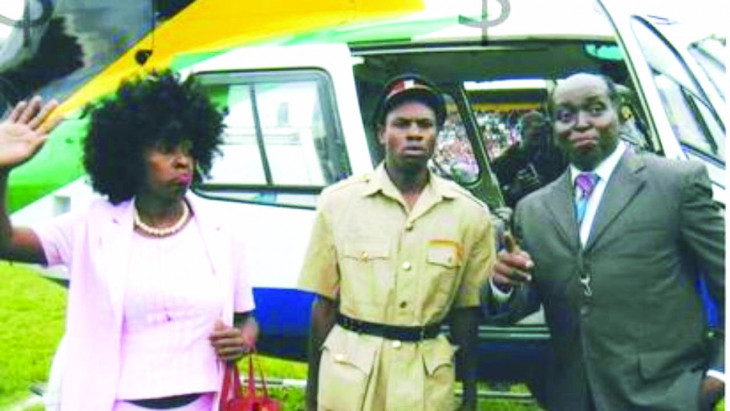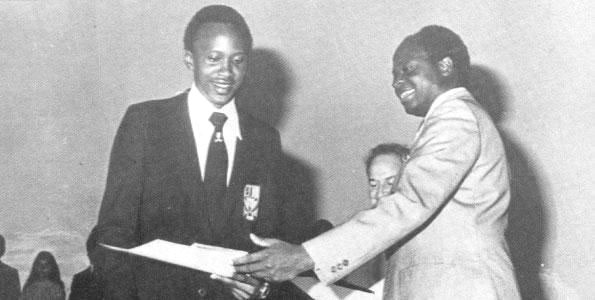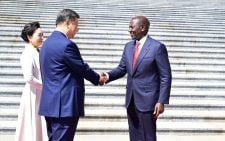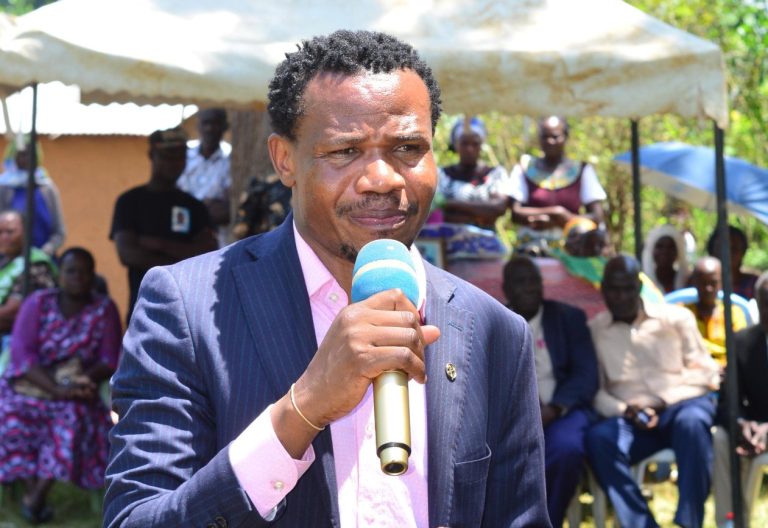Kibaki’s tenure: Creatives thrived thanks to sound policies, freedoms

His colleagues at Makerere University in Uganda say Mwai Kibaki was a good dancer and would waltz on the dance floor in all the manners of a gentleman.
Many decades later, he swept into power to the beats of Unbwogable, the Gidi Gidi, Maji Maji hit song that the National Rainbow Coalition (Narc), on whose ticket he won the presidency in the 2002 General Election, adopted as its campaign anthem.
It was not just Gidi Gidi and Maji who thrived in Kibaki’s ten-year presidency.
Thanks to the freeing of the airwaves which opened the way for more radio and television stations and the more liberal political environment, the local music and entertainment scene had its golden era during the Kibaki presidency.
And the First Lady, now late Mama Lucy Kibaki, contributed in no small way to the growth of the creative sector.
Early in Kibaki’s presidency, Mama Lucy adopted the Makongeni SDA Choir as the State House choir, which performed in events that she and the President graced.
In an earlier interview, State House music director June Ogolla said Mama Lucy wanted a choir that would unify all departments at the house on the hill.
During Mama Lucy’s funeral in 2016, the choir performed one of her favourite songs, Tupendane Sote.
And like her husband, Mama Lucy could also shake a leg. During the promulgation of the new Constitution on August 27, 2010, the First Lady led the presidential dais at Uhuru Park in dancing to gospel singer Emmy Kosgei’s Taunet Ne Leel (New Beginning) song.
Comedy flourished during the Kibaki’s decade. Although it started during the sunset years of President Daniel arap Moi with the pioneer Redykyulass group of Walter Mongare, Tony Njuguna and John Kiarie, it took root during Kibaki’s watch.
Redykyulass, which largely caricatured politicians, including the President himself, gave way to the Churchill Show, on which most of the country’s stand up comedians cut their teeth.
The satirical puppet TV show XYZ, on which Kibaki’s character and those of other senior politicians featured prominently, was also founded during his presidency.
It was an era where artistes did not only explore new creative frontiers but also sought to earn their rightful share from their work.
Although the Kenya Copyright Board was established in 2001, which enabled the growth of Collective Management Organisations (CMOs), it did not ease the financial burden of most creatives.
The CMOs, such as the Music Copyright Society of Kenya and Kenya Association of Music Producers, continued to wallow in corruption while the artistes suffered.
Corporate deals
But entertainment clubs and events business started to flourish and the money trickled down to artistes.
“It is true that during Kibaki’s era, we saw rampant corruption in some of the royalties collecting bodies, but it is also the time artistes started getting empowered through different forums such as the Kuona Trust, and Words and Pictures (Wapi) at the British Council.
“At the same time, the entertainment scene was growing with Kenyans acts dominating the East Africa region. This was hugely propelled by the fact that we had new fresh radio stations playing the new urban sound. Kibaki’s era coincided with the golden age of Kenyan music,” says rapper Colonel Moustapha of the now defunct Deux Vultures music duo.
Moustapha says that was era that artistes started to earn a decent income from performances, corporate deals and endorsements.
Coast-based musician Nyota Ndogo observes that it was during Kibaki’s time that many female artistes joined the industry and thrived.
“When I started, we had a number of people whose focus was growing the industry and saw showbiz as an opportunity for mutual business. This led to more female musicians coming into the scene and the numerous platforms saw us build brands that still pay us today,” she says.
Poet Kennet B says a booming economy reverberates in all sectors, including the creative industry.
“Many poets blossomed during Kwani Open Mic, which gave an identity to most of us. Theatre also grew and all these platforms benefitted a lot of creatives,” he says.
Towards the end of Kibaki’s presidency, the government initiated regulations that would require broadcasters to use 40 per cent of local content on their platforms.
The policy was aimed at expanding markets for the distribution of local films, plays and music, thus, creating new opportunities for artistes and producers.
Kalasha Awards
“During his tenure, we saw the rebirth in media spaces that gave creatives the platforms to express themselves. This is when we saw an increase of local TV shows from which a new crop of stars were born,” says actor and film producer Alfred Munyua.
Munyua, who starred in award-winning films Sense8 and First Grader, says that while there is still much to be done in the industry, a lot of credit goes to Kibaki for many gains made in the past two decades.
“The five per cent (corporate tax incentive) during his era was a great reprieve, but the biggest game changer was the establishment of the Kenya Film Commission (KFC) in 2005. This gave the film industry the much needed injection to boost not only the morale of film-makers, but also as a point of contact for many foreign filmmakers who wanted to shoot their films here,” he says.
Munyua adds that initiatives such as the Kenya International Film Festival and The Kalasha Awards gave local productions a chance to showcase and interact with investors from different parts of the world.
“When the then Minister for Information and Communications John Michuki received a report from KFC, as young filmmakers, we were happy as it had much promise. The proposed film incentive proposal had five pillars namely: local industry and content development, large film and television film incentive, film infrastructure development, film development fund, and increased funding for the KFC,” he says.













